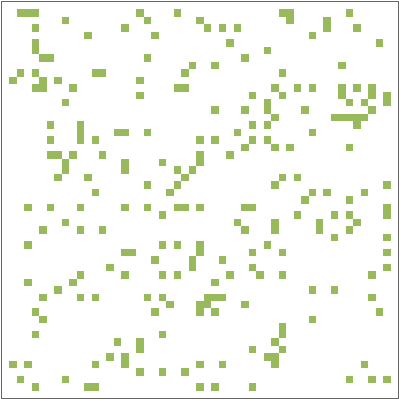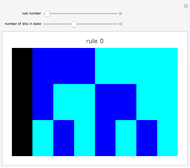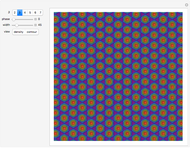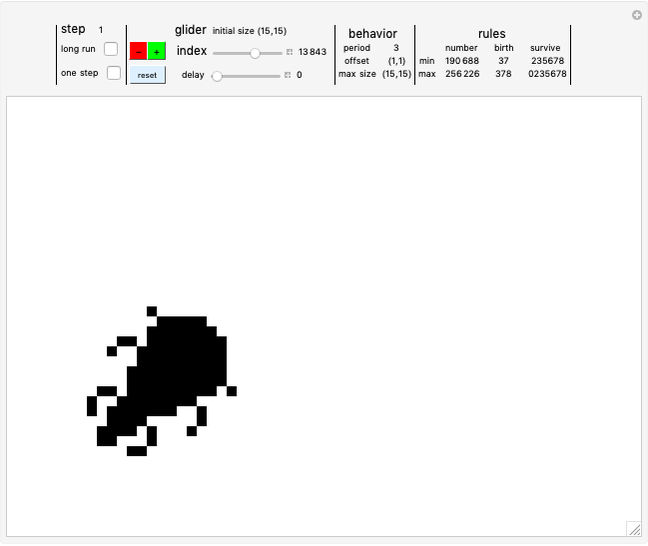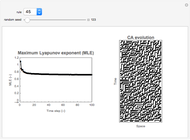A Discrete Model of Excitable Media

Requires a Wolfram Notebook System
Interact on desktop, mobile and cloud with the free Wolfram Player or other Wolfram Language products.
This Demonstration implements a model of excitable media. Space is represented as a grid of cells. Each cell can be in any of three states: (1) quiescent, (2) excited, or (3) refractory. A quiescent cell (white) becomes excited (green) if at least two of its neighbors are excited, then becomes refractory (yellow) at the next iteration. A refractory cell has a chance to become quiescent again with a fixed probability at every iteration.
Contributed by: Jeremy Owen (April 2011)
Open content licensed under CC BY-NC-SA
Snapshots
Details
Snapshot 1: the initial state of the model, which is mostly quiescent with randomly scattered excited cells
Snapshot 2: traveling waves emerging from disorder
Snapshot 3: a very long, steplike, moving structure
The "reset" button at the top right returns the model to its initial state. When the "run" checkbox is checked, the model runs continuously. When it is unchecked, the model does not run. Boundary conditions are periodic.
Based on a model discussed in [1].
Reference
[1] J. L. Schiff, Cellular Automata: A Discrete View of the World, New York: Wiley, 2008.
Permanent Citation
"A Discrete Model of Excitable Media"
http://demonstrations.wolfram.com/ADiscreteModelOfExcitableMedia/
Wolfram Demonstrations Project
Published: April 20 2011

